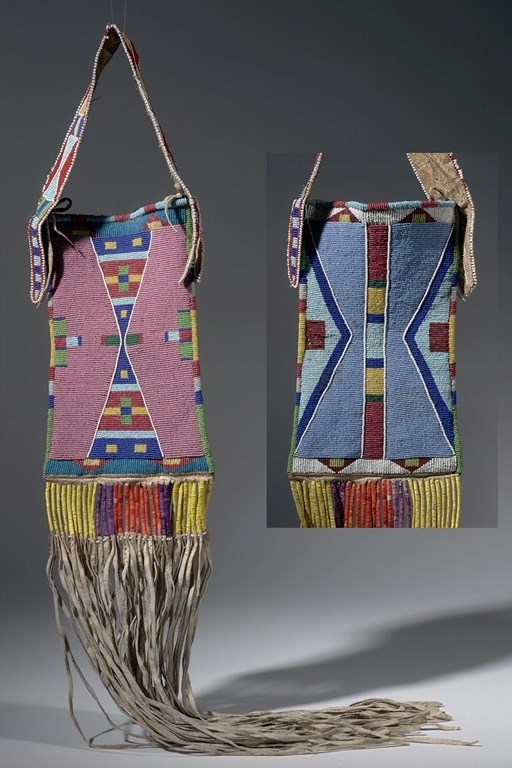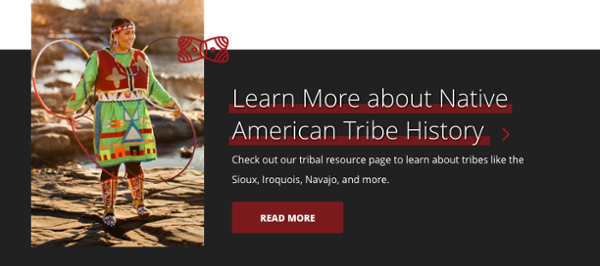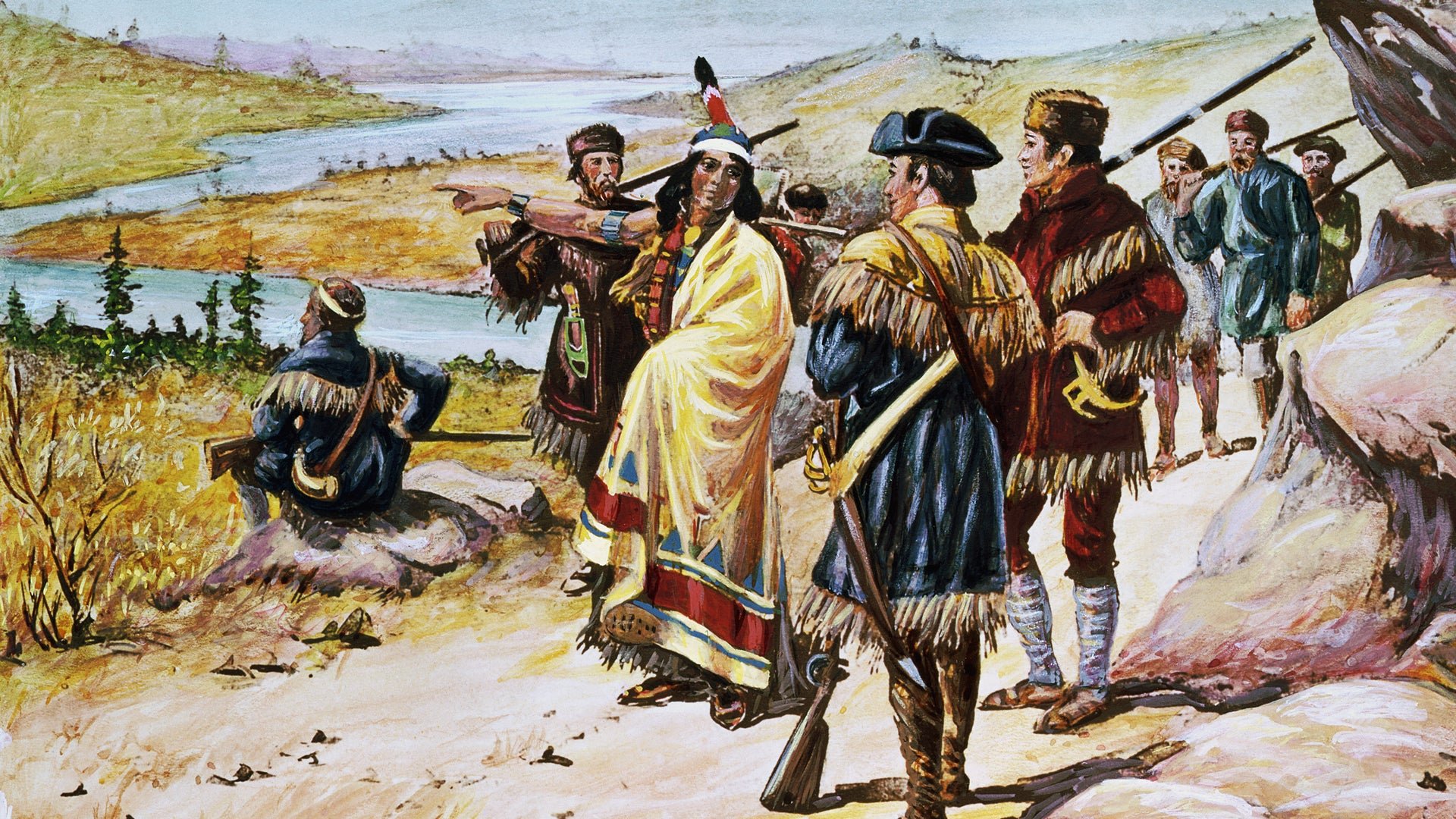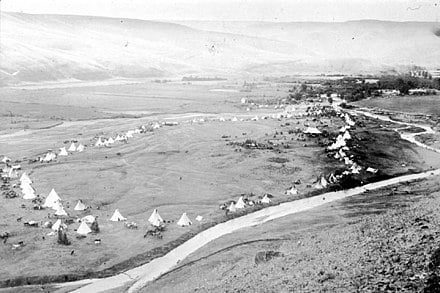May 28, 2023 | Native Hope
The Crow tribe has a long and vibrant history. From nomads on the Great Plains to their life on a reservation in Montana, the Children of the Large-Beaked Bird have stories to tell and insights to share.
Read on to learn more about this tribe’s life and what impact they continue to have on American culture.
History of the Crow Tribe
The Crow called themselves the Apsáalooké or Absaroka, which means “children of the Large-Beaked Bird.” This name was misunderstood by white men to mean “Crow.” Other Native tribes referred to the Crow as “Crow” or “Raven” in their respective languages. Many Apsáalooké believe that the large-beaked bird that they were named after was the mythical Thunderbird, not a crow.
The Crow tribe's homelands included parts of Montana, Wyoming, and South Dakota. From there, they were mainly pushed West by the Cheyenne and Sioux tribes. Once they were established in Montana and Wyoming, the Crow divided into four groups: the Mountain Crow, River Crow, Kicked in the Bellies, and Beaver Dries Its Fur.
Apsáalooké interaction with European settlers began with French traders who conducted mutually beneficial trade with the Native Americans, including trading fur for guns and other goods. During the Western expansion, the Crow allied with the United States against their neighbors and rivals, the Sioux and Cheyenne tribes.
Over time, the Crow people transitioned to a nomadic lifestyle and hunted bison. The Treaty of Fort Laramie of 1851 gave the Crow tribe a large section of land around the Big Horn Mountains. Though even with the supposed guarantee of their land, the Cheyenne and Lakota Sioux continued to migrate westward and encroach on Crow land.

Crow Tribe Culture
The Apsáalooké had a vibrant culture when they were living out on the plains, and they still have vibrant art and cultural practices today.
Crow Tribe Clothing
Women within the Crow tribe would make clothes out of bison skins. Their clothing was often adorned with intricate beadwork, feathers, and animal teeth. The Crow also made elaborate headdresses that were worn into battle.
What Did the Crow Tribe Eat?
As hunters on the Great Plains, the Crow generally ate game of various kinds. The main source of their food was bison, which they hunted using a variety of methods. In one type of hunting, called buffalo jumps, the bison would be corralled to a cliff and forced to jump off. In traditional bison jumps, a medicine man would bless the ceremony and ask the Great Spirit to make it successful. Apsáalooké also hunted bighorn sheep, mountain goats, deer, elk, bear, and other game. Women traditionally processed the food.
Crow Tribe Houses
The Crow lived in tipis, which were easy to break down and carry with them to their next hunting site. They were known for constructing some of the largest tipis among Native American tribes. The tipi poles were used as travois after being collapsed for travel, so the Crow could carry their belongings and children using the structures.
Crow Family Life
Women had a significant role within the Crow tribes, helping to prepare food and clothing for their families. Women also occasionally participated in raiding parties, particularly if the raiding party was formed to avenge the death of a close relative.
The Crow were matrilineal, so the family tree was traced through the mother’s side. Newly married couples would also move into the wife’s mother’s house when they got married. Crow tribes had a strong kinship system to help them define and describe family members.
Crow Tribe Art
In addition to the intricate beadwork on clothing, Crow art included creations to honor the horses and articles for the horses to wear in their mounted parades. The Crow are known for their quill embroidery and carvings as well.

Crow Tribe Spiritual Beliefs
The Crow tribe believed that the mountains were sacred and that it was where the first maker watched his creation. In the Crow creation myth, Iickibaalia, the Creator god, made the Crow by asking four ducks to dive into a lake and bring mud back up from the bottom. The first three ducks failed, but the fourth made it back. From that mud, Iichikbaalia made the first Crow. Storytelling is an important part of Crow culture, and the stories are passed down from generation to generation through oral storytelling.
A large part of Crow’s religious belief was vision quests. These involved prayers, vows, and fasting in isolation. Some Crow would also sometimes pierce their bodies as part of the vision quest. Through the quests, a man who had visions was “adopted” by a spiritual guardian who told him how to gather objects in a medicine bundle. The man could share the power he received from the visions with men who had not experienced visions, and he could also make replica bundles for them. Women also engaged in vision quests, but little is known about their rituals because few were recorded.
What is the Crow Tribe Known For?
Horses
The Crow tribe is known for having some of the largest bands of horses on the northern Great Plains. Once introduced to horses, they became horse breeders and traders. Yet their impressive herds also made them subject to attacks and raids from other tribes.
Horses allowed the Crow to improve their hunting ability, and they developed impressive maneuvers to use during battle, such as firing arrows while hanging underneath a galloping horse. The Crow also used dogs as guards for their horses and as pack animals to carry their belongings and pull their travois before they had horses to help.
Beading
Crow beading was impressive and decorated their clothing, weapons, and horses. They even developed their own style of stitching to attach the beads to clothing. The colors used in beadwork reflected Crow's reverence for nature and highlighted sacred power and life. Pink beading represented the early morning, while blue represented the sky and green represented Mother Earth.
Language
The Apsáalooké tribe is known for its writing system's strength and enduring language. The Crow language originated from the Missouri River Valley branch of Siouan languages.
Is the Crow Tribe Still Around Today?
Today, the Crow nation mostly lives on a reservation in the southeastern part of Montana. The Crow reservation is the largest in Montana, spanning about 2.2 million acres. About 75% of the Apsáalooké’s enrolled members live on or near the reservation. About 85% of the tribe speaks Crow as their first language, and it is taught in schools on the reservation alongside Crow history and culture.
The Crow Tribe has a council made up of three government branches that oversee the tribe: executive, legislative, and judicial. A large part of the tribe’s economic resources come from the coal on the reservation, as well as oil and gas fields.
The Crow Fair is an important cultural event held every year on the Montana reservation. At this event, tipis are constructed, and tribe members give demonstrations and practice their traditions to keep them alive and to educate others on their tribal history. It’s described as the largest gathering of tipis in the world.
Some famous Crows include Noah Watts/Bulaagawish, an actor, and Bethany Yellowtail, a fashion designer.

Want to learn more about Native American history?
Grab our guide, Reflecting on Our Foundations, to learn about:
- Different tribes and where they lived
- Native American values and spirituality
- How learning and culture were passed down through generations
- How colonization impacted and disrupted Native American life
- And much more!





COMMENTS